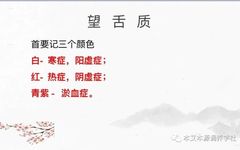Let’s talk about what tongue quality is, which refers to the thin layer of coating on our tongue, known as shè tái (tongue coating). This coating is produced by qì (qi) and its thickness determines the strength or weakness of pathogenic factors in our body. The shè zhì (tongue quality) represents the adequacy of our zhèng qì (vital energy), which is reflected in the color of the tongue body, the overall color of the tongue itself.
The redness or paleness of the tongue, or even a purplish hue, indicates the state of our body’s constitution, reflecting whether the zhèng qì is sufficient or deficient.
Normally, a healthy tongue quality is light red. When our qì and xuè (blood) are abundant, the color of our tongue is light red, and our complexion, including skin tone, appears rosy and vibrant.
If the body’s huǒ (fire) is excessive, the tongue may appear redder. Conversely, if there is a deficiency of qì and xuè, the tongue may appear pale or lighter. Thus, the color of the tongue reflects the strength or weakness of our zhèng qì.
In health practices, we often hear about fú zhèng qū xié (supporting the righteous and expelling the evil), which means we first need to expel the pathogenic factors from the body before replenishing the zhèng qì. This is crucial for effective treatment. Why do some people fail to benefit from tonics despite being weak? It is because excessive pathogenic factors hinder the replenishment of zhèng qì.
Therefore, in Traditional Chinese Medicine, we emphasize the principle of qīng tiáo bǔ (clearing, regulating, and tonifying). First, we need to clear the body of pathogenic factors, which can be assessed by observing the tongue coating—its thickness, color (white or yellow). Once the pathogenic factors are cleared, the tongue coating will appear thinner and whiter, indicating a reduction in pathogenic factors. At this point, replenishing zhèng qì becomes easier and less likely to cause excess heat.
When we talk about expelling evil, we often refer to detoxification. What are we detoxifying? We are primarily expelling excess fēng (wind), hán (cold), shǔ (summer heat), shī (dampness), zào (dryness), and huǒ (fire) that interfere with our health. This is commonly referred to as detoxification, but more specifically, it involves expelling dampness, heat, and blood stasis.
Supporting the zhèng means following the principle of qīng tiáo bǔ: first clear, then regulate, and finally tonify. Tonification primarily involves replenishing qì, xuè, and jīng yè (essence and fluids), as these are the internal energies and materials that nourish our body.
When we feel weak, it is often due to deficiencies in qì, xuè, or jīng yè. Today’s lesson will help you identify these conditions through tongue coating observations.
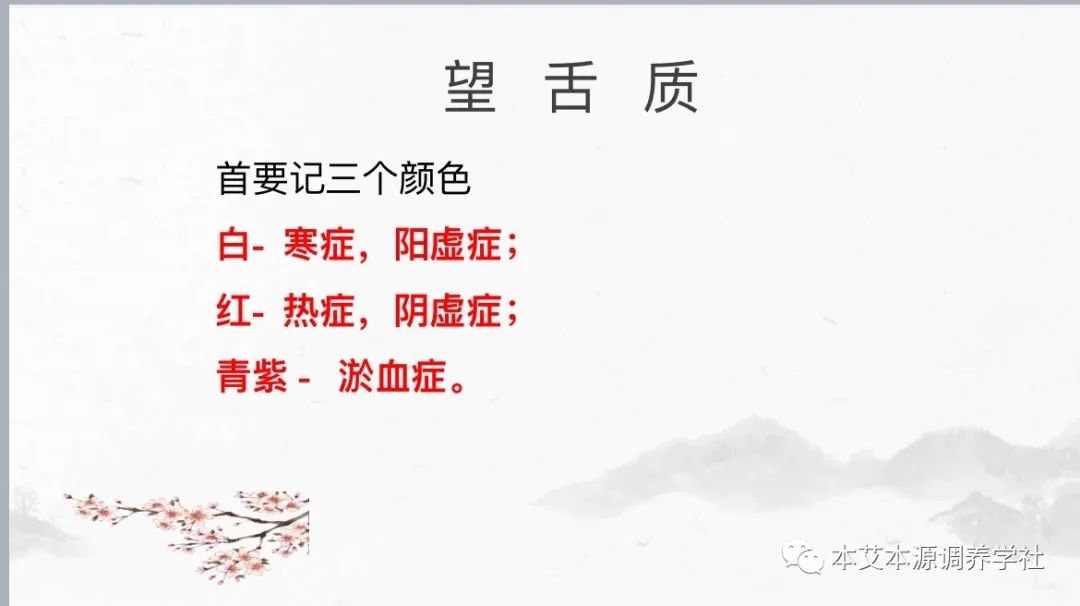
When examining tongue quality, we typically differentiate among three colors: white, red, and purplish. A white tongue indicates hán zhèng (cold syndrome) or xū zhèng (deficiency syndrome). A red tongue indicates rè zhèng (heat syndrome) or yīn xū (yin deficiency). A purplish tongue primarily indicates yū xuè (blood stasis).
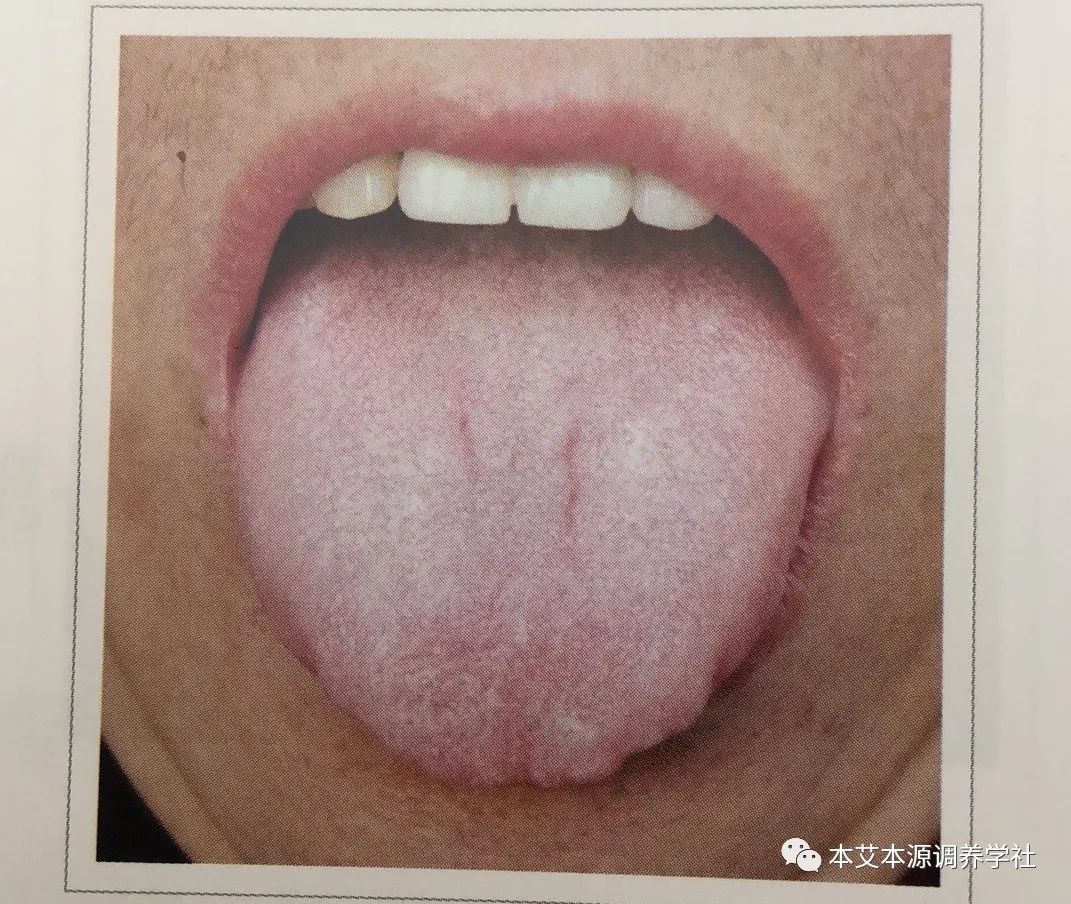
Now, let’s look at this tongue. The tongue body appears pale and slightly atrophied, indicating a xū zhèng (deficiency syndrome), specifically xuè xū (blood deficiency).
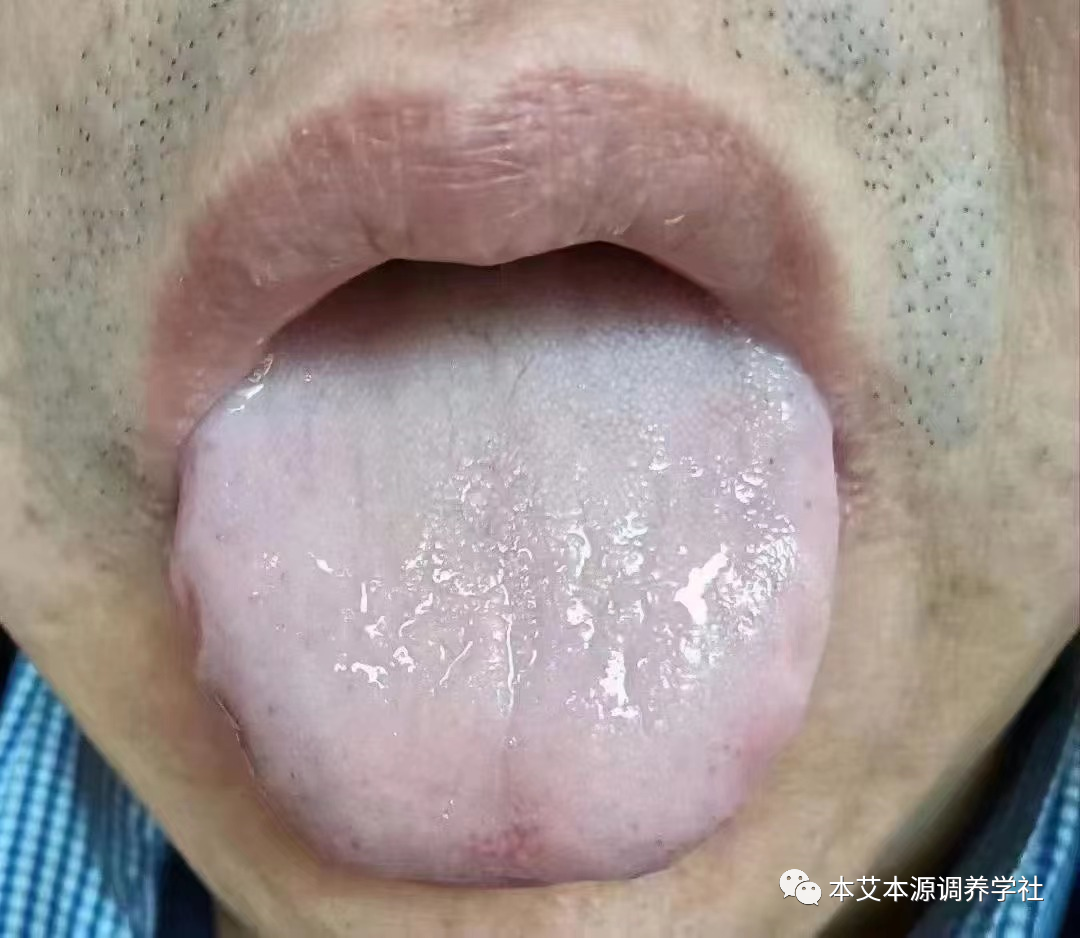
This tongue is both pale and enlarged, indicating a yáng xū (yang deficiency).
How do we differentiate between xuè xū and yáng xū? Both types of tongues are pale, but individuals with xuè xū do not fear cold, while those with yáng xū are sensitive to cold. Additionally, the tongue of a person with xuè xū is pale and atrophied, while the tongue of a person with yáng xū is pale and enlarged.
Sometimes, yáng xū and xuè xū can coexist. For instance, some individuals with yáng xū may also have insufficient qì and xuè. When qì and xuè circulate well, yáng energy rises. If circulation is weak, yáng energy cannot rise, leading to both conditions.

As we observe the tongue, the first thing to note is its color, moisture, dryness, shape, and any irregularities. This tongue has a yellow coating and a red body, indicating a shī rè (excess heat) condition. The presence of heat in the body is evident, as the tongue is yellow and the body is red, indicating a lack of moisture due to persistent heat.
Thus, our treatment direction should focus on clearing heat while ensuring adequate hydration. Sometimes, insufficient water can also lead to heat, so replenishing fluids can help clear heat. Once the heat subsides, the yellow coating will gradually diminish.
Individuals in this category often include those who smoke, drink alcohol, and consume excessive rich foods, making them prone to conditions like hypertension.
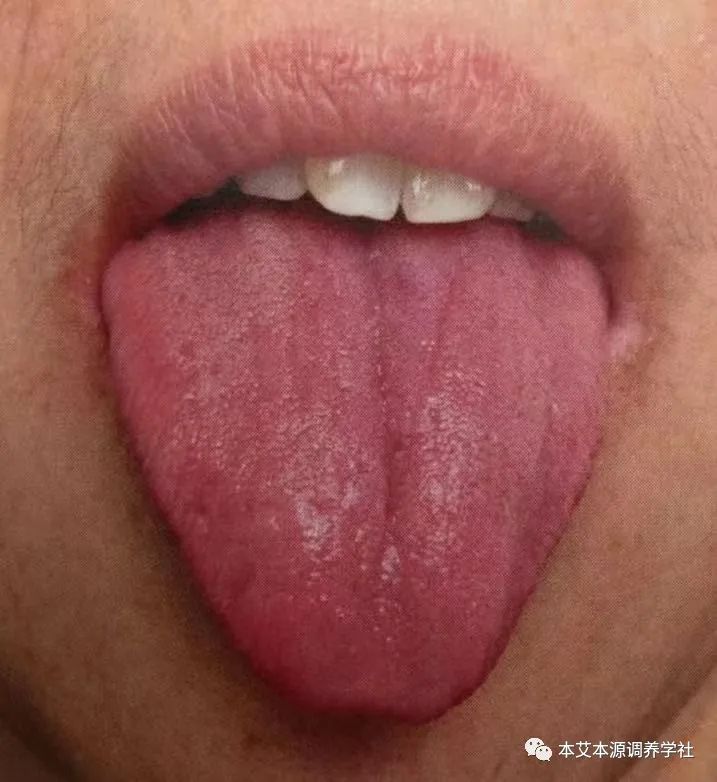
Now, let’s examine this tongue. It is red but lacks coating, indicating a yīn xū (yin deficiency). The coating is produced by wèi qì (stomach qi) and wèi yīn (stomach yin). The absence of coating indicates that the stomach yin is damaged, leading to a deficiency of fluids.
For individuals with yīn xū, the focus should be on replenishing fluids and essence, rather than clearing heat, as this could exacerbate their deficiency.
Both yīn xū and xuè xū can cause the tongue to appear smaller and atrophied. However, individuals with yīn xū tend to be sensitive to heat, while those with xuè xū do not.
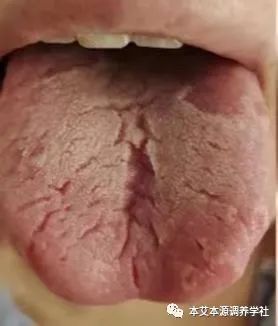
Now, let’s look at the purplish tongue. When the tongue is extended, it appears dark and purplish, indicating a tendency towards tumors, nodules, cysts, and hyperplasia. This is often due to cold congealing with blood stasis, leading to the formation of tangible masses. Additionally, individuals who frequently experience anger or pent-up emotions may also suffer from qi stagnation and blood stasis, which can lead to conditions like breast diseases, thyroid issues, and uterine fibroids.
Thus, individuals with a blood stasis constitution are prone to pain and many women may experience dysmenorrhea, blood clots, and easy bruising.
In such cases, the treatment direction should focus on invigorating blood circulation and dispelling cold. If qi stagnation is the cause, we need to soothe the liver and regulate qi, addressing emotional disturbances. This tongue shows signs of cold congealing and blood stasis, along with qi stagnation.
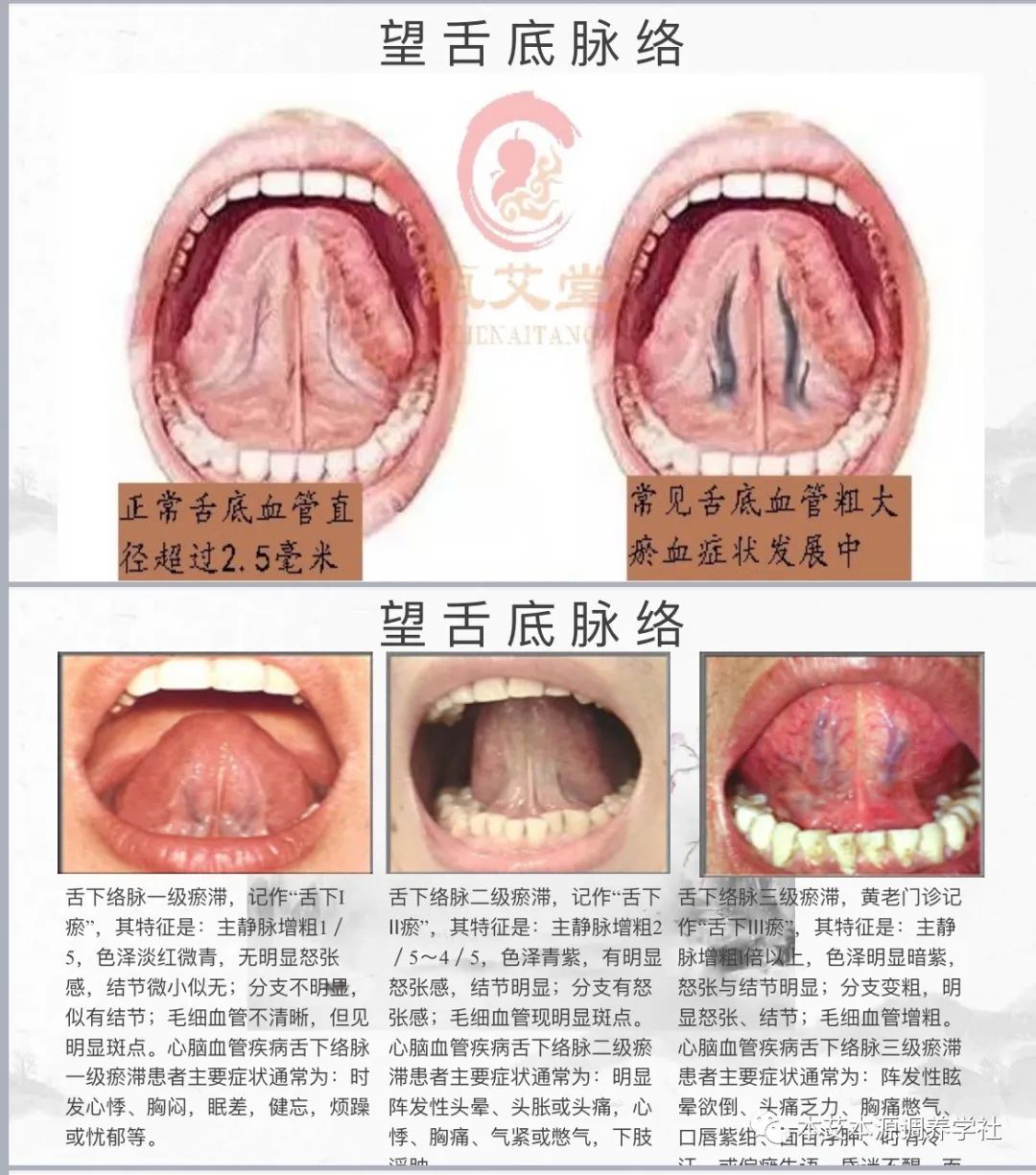
Next, we observe localized purplish spots on the tongue, particularly in the liver and gallbladder area. This is typically caused by anger, which damages the liver. When liver qi is disrupted, blood stasis can occur. Some individuals may even experience a crooked tongue after an outburst of anger, indicating the need to soothe the liver, regulate qi, and invigorate blood circulation.

Some individuals may have blood stasis that is not immediately visible on the tongue body but can be observed in the sublingual veins. If the sublingual veins appear engorged, it indicates the presence of blood stasis. Compare your own sublingual veins to see if there are signs of blood stasis.
Finally, let’s discuss tongue fissures.

This is a tongue with fissures, resembling cracked earth. This indicates yīn xū, as the body’s fluids have been depleted, leading to a dry tongue. Individuals with hyperthyroidism often exhibit signs of yīn xū due to accelerated metabolism and impaired liver function. Similarly, individuals with diabetes may also show signs of severe yīn xū.
Such individuals often experience dry mouth and poor sleep, as the lack of essence leads to dryness throughout the body, including the nose and eyes.
Humans are composed of water, and insufficient moisture leads to dryness in various parts of the body. Each organ requires essence for nourishment, and when essence is deficient, every part of the body feels dry. This condition persists regardless of water intake, as water alone cannot resolve the essence deficiency.
Another type of dryness can also cause fissures, but the tongue appears pale. This indicates a deficiency of xuè (blood). If the tongue is red and dry, it indicates a deficiency of jīng yè (essence and fluids).
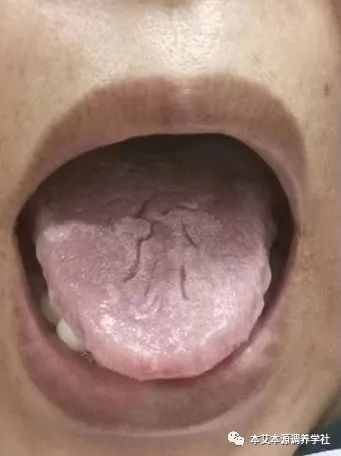
This tongue is pale with fissures and a small, atrophied shape, indicating a typical case of xuè xū. When blood deficiency reaches a certain level, it also manifests in the tongue. Individuals with chronic blood deficiency may exhibit such symptoms, especially after major surgeries.
The lips may also appear dark and lack luster, indicating severe blood deficiency. Since the heart governs blood vessels, individuals with severe blood deficiency often experience poor sleep and discomfort due to insufficient blood supply to the heart, leading to palpitations and chest tightness.
Today, we discussed the tongue qualities associated with xuè xū, yáng xū, shī rè, xū rè, and yīn xū. Observe the people around you carefully.
For further learning, feel free to join our group.


